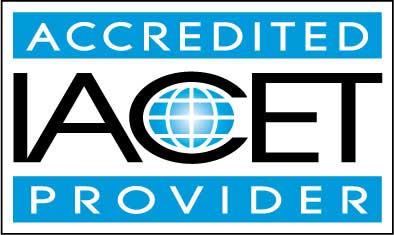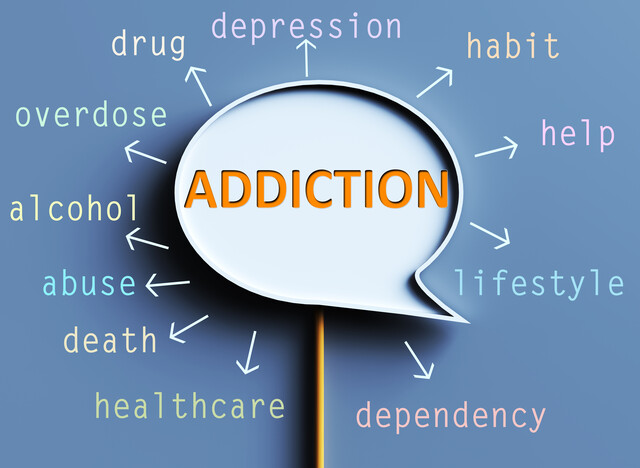Online Class: Workplace Drug Use - An HR Guide

no certificate
with CEU Certificate*
-
15Lessons
-
37Exams &
Assignments -
409Students
have taken this course -
3Hours
average time -
0.3CEUs
Course Description
Substance Abuse & The Workplace: Understanding, Addressing, and Rising Above
Substance abuse – a silent, persistent, and ever-encroaching shadow – doesn't discriminate. In its relentless grip, millions find themselves ensnared, battling not just addiction but its cascading ripple effects that touch every aspect of their lives and the lives of those around them. It's not just a personal battle; the very fabric of our society, including our workplaces, is stained by its impact. With the United States grappling with the profound dimensions of this epidemic, understanding its intricacies becomes not just important, but imperative.
Think of the modern workplace – a bustling hub of productivity, creativity, and collaboration. But lurking beneath the surface is an often overlooked reality: substance abuse. Whether it's the high-performing executive seeking solace in narcotics or the diligent worker battling personal challenges, no one is immune. This course, designed with meticulous attention, aims to shed light on this silent plague.
Delve into a comprehensive journey:
-
Unmasking the Enemy: Decode the myriad types of addictive substances, from the seemingly benign to the overtly destructive. Understand their physiological, psychological, and social repercussions.
-
Historical and Legal Context: Traverse the history of addiction and gain insights into the legal maze surrounding various substances. How did we get here?
-
Recognizing the Subtle Signs: Arm yourself with the ability to discern the often subtle yet critical warning signs of abuse – a skill invaluable in the workplace and beyond.
-
Beyond Identification - Intervention: Dive deep into strategies for workplaces, from formulating ironclad policies to launching rehabilitation and support programs.
-
Empowerment Through Awareness: Equip yourself with tools and knowledge not just to respond but to proactively address and mitigate the challenges posed by substance abuse.
Envision a world where workplaces aren't just centers of professional growth, but sanctuaries of well-being. This course is more than an educational endeavor; it's a call to action, a step towards creating safer, healthier, and more supportive work environments. Whether you're an employer, an HR professional, or a concerned colleague, by the end of this course, you'll be equipped with the knowledge and tools to make a tangible difference.
Join us on this transformative journey. The battle against substance abuse begins with awareness, and awareness starts here. Let's rise above, together.
- Completely Online
- Self-Paced
- Printable Lessons
- Full HD Video

- 6 Months to Complete
- 24/7 Availability
- Start Anytime
- PC & Mac Compatible
- Android & iOS Friendly
- Accredited CEUs

Course Lessons
Lesson 1. Understanding Employee Substance Abuse and Its Implications
Public perceptions of addiction are often clouded by myths, such as its voluntary nature or the purported security of legal substances, driving a narrative that impedes genuine recovery efforts. By focusing on education and the realities of addiction, society can foster more informed, supportive frameworks for tackling substance misuse.Lesson 2. Understanding Substance Abuse: Past Lessons and Future Challenges
Alcohol's enduring struggle as a social dilemma predates modern drug policies, highlighting a shift from tempered prohibition to moderation advocacy. This historical perspective shapes current global strategies on substance abuse management, emphasizing public health over punitive approaches.Lesson 3. Opioid Crisis Explored: Causes, Effects, and Future Directions
Opioids, often misconceived as all illegal drugs, originate from opium poppies and now include synthetic versions, enhancing both their medical value and misuse risks. With rising fatalities from overdoses, opioids have spotlighted the challenges of addiction that span cultural and economic contexts.Lesson 4. The Dynamics of Stimulants: From Medical Use to Misuse
Stimulants enhance brain activity by increasing dopamine, impacting mood, attention, and nervous system activation, but excessive use can lead to addiction and physical and mental health issues. Legal stimulants like Adderall help with ADHD, while illegal ones like cocaine pose addiction risks; recovery involves therapy and support networks.Lesson 5. Depressants Unveiled: The Balance Between Benefit and Risk
Recovery from depressant dependence involves structured medical detoxification and rehabilitation programs. Utilizing therapies like CBT and medication-assisted treatments, individuals build long-lasting strategies to overcome addiction and reclaim their lives.Lesson 6. Beyond Reality: The Intriguing World of Hallucinogens
Characterized by their power to induce hallucinations and profound perceptual changes, hallucinogens have played roles in spiritual and ritualistic contexts throughout history. Today, they are studied for potential therapeutic benefits and pose challenges requiring nuanced understanding and treatment.Lesson 7. Workplace Alcoholism: Signs, Impacts, and Solutions
Heavy drinking and bingeing are increasingly misperceived as socially acceptable, paving the way for chronic issues that manifest in the workplace, sparking accidents and productivity losses. Cultivating a robust workplace culture with transparency, addressing addiction as a disease, and supporting active intervention lead to healthier professional ecosystems.Lesson 8. The Multifaceted Nature of Addiction: Exploring Its Diverse Causes
The search for a singular root of addiction has exposed its multifaceted dimensions, with no solitary face encompassing its reality. Social, genetic, and neurobiological aspects converge in addiction, presenting a condition that begins with voluntary actions but progresses into an uncontrollable dependency.Lesson 9. Navigating the Complexities of Substance Abuse at Work
Workplace substance abuse disrupts safety and productivity, incurring significant financial and legal costs that can ripple through businesses. A culture of prevention and early intervention holds potential to safeguard both individuals and organizations.Lesson 10. Navigating the Legal Complexities of Workplace Substance Issues
Organizations are proactively addressing workplace substance abuse through comprehensive policies that balance prevention, support, and legal compliance, ensuring a safe and productive environment for all employees. By focusing on training, drug testing, and open communication, employers create a supportive atmosphere that encourages recovery while preventing safety risks.Lesson 11. Workplace Drug Testing: Methods and Controversies
The modern workplace necessitates effective detection methods for drug use to maintain safety and productivity, particularly in high-stakes industries like healthcare and construction. Employers must balance legal regulations and employee rights while adopting comprehensive testing policies to safeguard both workplace safety and individual privacy.Lesson 12. Unlocking Potential: The Role of EAPs in Modern Workplaces
Internal, external, and blended EAP models cater to diverse organizational needs, with each offering unique benefits tailored towards confidentiality, resource availability, and specific community values. By strategically selecting the appropriate EAP model, companies can ensure their support initiatives align with broader operational objectives and ethos.Lesson 13. Workplace Substance Abuse: Influencing Factors and Solutions
Substance abuse etiology reveals the multifaceted reasons behind employee misuse, including workplace stress, peer influence, and socio-economic conditions. Effective management requires a comprehensive approach comprising employer responsibility, personal resilience, and community support.Lesson 14. The Workplace Journey of Employees in Recovery
Effective employee support involves both understanding addiction's complexities and promoting stigma-free recovery processes. By cherishing privacy and incorporating wellness programs, employers can create a nurturing space conducive to sustainable recovery and personal growth.Lesson 15. Building a Supportive Culture Against Drug Abuse
Organizations must address substance abuse through comprehensive education and employee support initiatives that encourage seeking help. Establishing partnerships with bodies like NCADD and SAMHSA enables companies to build informed, empathetic approaches to managing workplace substance abuse and supporting long-term recovery.
Learning Outcomes
- Demonstrate understanding of substance abuse by identifying signs and symptoms of addiction in the workplace.
- Differentiate between common myths and facts about substance abuse using examples from the course material.
- Define the historical context of substance abuse and its evolution in societal norms and legal frameworks.
- Identify and classify substances based on their schedule, understanding their legal implications and potential risks for abuse and dependence.
- Analyze the impact of narcotics abuse on individuals and create a recovery plan addressing treatment options and support systems available for users.
- Define narcotics and identify their legal and illegal forms, including signs of their abuse and short- and long-term effects on users.
- Describe the process and challenges involved in the treatment and recovery from stimulant addiction, emphasizing the importance of professional assistance.
- Recognize the symptoms of stimulant abuse, including increased heart rate and unusual behavior, and understand their potential short- and long-term side effects.
- Define the primary characteristics of depressants, including their medical and non-medical usage, with 90% accuracy in identification.
- Describe three short-term and three long-term effects of depressant usage, demonstrating understanding by providing specific examples from the lesson.
- Identify and describe at least three types of hallucinogens and their origins, distinguishing between natural and synthetic forms.
- List and explain the short-term and long-term effects of hallucinogen use on physical and psychological health, using specific examples from the lesson.
- Define the signs of alcohol abuse in the workplace by identifying behavioral, physical, and emotional indicators within a given scenario.
- Demonstrate mastery of lesson content at levels of 70% or higher.
Additional Course Information

- Document Your Lifelong Learning Achievements
- Earn an Official Certificate Documenting Course Hours and CEUs
- Verify Your Certificate with a Unique Serial Number Online
- View and Share Your Certificate Online or Download/Print as PDF
- Display Your Certificate on Your Resume and Promote Your Achievements Using Social Media

Choose Your Subscription Plan
No Certificate / No CEUs
This course only
| Includes certificate | X |
| Includes CEUs | X |
| Self-paced |

|
| Instructor support |

|
| Time to complete | 6 months |
| No. of courses | 1 course |
Certificate & CEUs
This course only
| Includes certificate |

|
| Includes CEUs |

|
| Self-paced |

|
| Instructor support |

|
| Time to complete | 6 months |
| No. of courses | 1 course |
Certificates & CEUs
Includes all 600+ courses
| Includes certificate |

|
| Includes CEUs |

|
| Self-paced |

|
| Instructor support |

|
| Time to complete | 12 Months |
| No. of courses | 600+ |
Certificates & CEUs
Includes all 600+ courses
| Includes certificate |

|
| Includes CEUs |

|
| Self-paced |

|
| Instructor support |

|
| Time to complete | 24 Months |
| No. of courses | 600+ |
Student Testimonials
- "It was very helpful. Learned many things as far as how much help there is out there and just the different things with drugs and alcohol abuse as far as legal things, assistance, how to help someone, how to know if someone is using." -- Jesse G.
- "Very good content and covered a broad of topics relevant to employee substance use." -- Mike L.
- "It was quite informative." -- Patricia T.
Related Courses
-
 25 hours
2.5 CEUs
Human Resources Productivity Course Bundle
+ More Info
25 hours
2.5 CEUs
Human Resources Productivity Course Bundle
+ More Info
-
 5 hours
0.5 CEUs
Basic Parenting Skills
+ More Info
5 hours
0.5 CEUs
Basic Parenting Skills
+ More Info
-
 7 hours
0.7 CEUs
Healthy Relationships
+ More Info
7 hours
0.7 CEUs
Healthy Relationships
+ More Info
-
 4 hours
0.4 CEUs
Understanding Workers' Compensation
+ More Info
4 hours
0.4 CEUs
Understanding Workers' Compensation
+ More Info
-
 17 hours
1.7 CEUs
Medical Terminology 201
+ More Info
17 hours
1.7 CEUs
Medical Terminology 201
+ More Info
-
 8 hours
0.8 CEUs
Medical Office Management
+ More Info
8 hours
0.8 CEUs
Medical Office Management
+ More Info
-
 5 hours
0.5 CEUs
Emotional Intelligence
+ More Info
5 hours
0.5 CEUs
Emotional Intelligence
+ More Info
-
 7 hours
0.7 CEUs
Collaboration Skills
+ More Info
7 hours
0.7 CEUs
Collaboration Skills
+ More Info
-
 7 hours
0.7 CEUs
Management Consultant 101
+ More Info
7 hours
0.7 CEUs
Management Consultant 101
+ More Info
-
 2 hours
0.2 CEUs
Professional Babysitting Skills
+ More Info
2 hours
0.2 CEUs
Professional Babysitting Skills
+ More Info
-
 7 hours
0.7 CEUs
Attention Deficit Disorders: ADD and ADHD
+ More Info
7 hours
0.7 CEUs
Attention Deficit Disorders: ADD and ADHD
+ More Info
-
 7 hours
0.7 CEUs
Preventing Workplace Harassment
+ More Info
7 hours
0.7 CEUs
Preventing Workplace Harassment
+ More Info
-
 6 hours
0.6 CEUs
Confidence Building
+ More Info
6 hours
0.6 CEUs
Confidence Building
+ More Info
-
 9 hours
0.9 CEUs
Emotional and Behavioral Disorders
+ More Info
9 hours
0.9 CEUs
Emotional and Behavioral Disorders
+ More Info
-
 8 hours
0.8 CEUs
Assertiveness Training
+ More Info
8 hours
0.8 CEUs
Assertiveness Training
+ More Info
-
 7 hours
0.7 CEUs
Understanding Drug and Alcohol Abuse
+ More Info
7 hours
0.7 CEUs
Understanding Drug and Alcohol Abuse
+ More Info
-
 7 hours
0.7 CEUs
Innovative Thinking Skills
+ More Info
7 hours
0.7 CEUs
Innovative Thinking Skills
+ More Info
-
 9 hours
0.9 CEUs
Introduction to Six Sigma
+ More Info
9 hours
0.9 CEUs
Introduction to Six Sigma
+ More Info
-
 7 hours
0.7 CEUs
Respectful International Workplace
+ More Info
7 hours
0.7 CEUs
Respectful International Workplace
+ More Info
-
 8 hours
0.8 CEUs
Procurement Management
+ More Info
8 hours
0.8 CEUs
Procurement Management
+ More Info
-
 8 hours
0.8 CEUs
Decision Making Skills
+ More Info
8 hours
0.8 CEUs
Decision Making Skills
+ More Info
-
 7 hours
0.7 CEUs
Understanding Financial Statements
+ More Info
7 hours
0.7 CEUs
Understanding Financial Statements
+ More Info
-
 3 hours
0.3 CEUs
HR Compensation and Benefits
+ More Info
3 hours
0.3 CEUs
HR Compensation and Benefits
+ More Info
-
 5 hours
0.5 CEUs
Critical Thinking Skills
+ More Info
5 hours
0.5 CEUs
Critical Thinking Skills
+ More Info
-
 5 hours
0.5 CEUs
Anger Management Techniques
+ More Info
5 hours
0.5 CEUs
Anger Management Techniques
+ More Info
-
 4 hours
0.4 CEUs
Resolving Workplace Conflict
+ More Info
4 hours
0.4 CEUs
Resolving Workplace Conflict
+ More Info
-
 6 hours
0.6 CEUs
Workplace Violence: A Guide to Responding and Preventing
+ More Info
6 hours
0.6 CEUs
Workplace Violence: A Guide to Responding and Preventing
+ More Info
-
 5 hours
0.5 CEUs
Lawful Employee Termination
+ More Info
5 hours
0.5 CEUs
Lawful Employee Termination
+ More Info
-
 7 hours
0.7 CEUs
Leadership Skills for Managers
+ More Info
7 hours
0.7 CEUs
Leadership Skills for Managers
+ More Info






